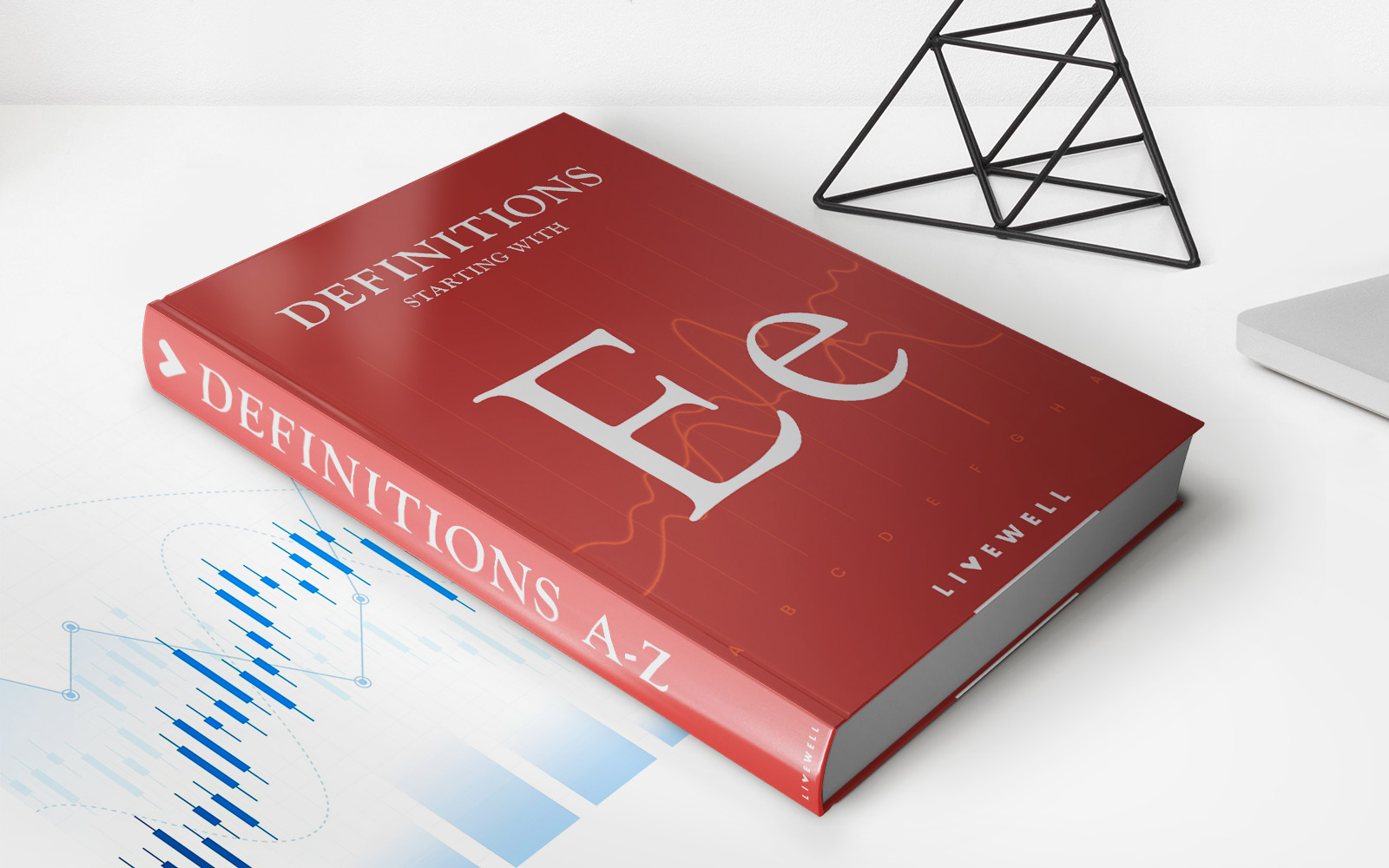

Finance
How Long Does The ERC Credit Take
Published: January 11, 2024
Learn how long it takes to receive an ERC credit in finance and gain valuable insights into the process. Get answers to your questions now.
(Many of the links in this article redirect to a specific reviewed product. Your purchase of these products through affiliate links helps to generate commission for LiveWell, at no extra cost. Learn more)
Table of Contents
Introduction
When it comes to applying for the ERC (Employee Retention Credit), one question that often arises is how long the processing time will take. The ERC is a tax credit designed to provide financial relief to businesses impacted by the COVID-19 pandemic. It incentivizes businesses to keep their employees on payroll by offsetting a portion of their employment taxes.
Understanding the processing time for the ERC credit is crucial for businesses who are relying on this credit to alleviate financial burdens. Whether you’re planning to use the credit to retain employees, invest in growth, or simply keep your business afloat, knowing the timeline can help you effectively manage your finances and make informed decisions.
In this article, we will delve into the factors affecting the ERC credit processing time, the standard and expedited processing timelines, common delays that can occur during processing, and tips to help speed up the process. So, let’s dive in and unravel the mysteries of the ERC credit processing time.
Overview of ERC Credit
The ERC (Employee Retention Credit) was introduced as part of the CARES Act in 2020 to provide financial support to eligible employers who have been adversely affected by the COVID-19 pandemic. The credit is designed to incentivize businesses to retain and compensate their employees during these challenging times.
Under the ERC program, eligible employers can claim a refundable tax credit against their applicable employment taxes. The credit is equal to a percentage of qualified wages paid to employees between specific periods. The exact percentage can vary depending on the specific timeframe and changes in legislation, so it’s important to stay updated on the latest guidelines.
Qualified wages can include both cash compensation and certain qualified health plan expenses. The credit is calculated on a per-employee basis, up to a maximum amount per employee. Employers can claim the ERC for wages paid from March 13, 2020, to December 31, 2021, but there are some key differences in eligibility and credit amounts for 2020 and 2021.
The ERC can provide significant financial relief for eligible businesses. It can be used to offset employment taxes, including the employer’s share of Social Security and Medicare taxes, up to the maximum credit amount. Any excess credit can be refunded, providing additional liquidity for businesses.
It’s important to note that the ERC can’t be claimed if the employer has received a Paycheck Protection Program (PPP) loan. However, businesses that previously received a PPP loan may still be eligible for the credit for wages that are not used to qualify for forgiveness under the PPP loan program.
Now that we have a better understanding of the ERC credit, let’s explore the factors that can affect its processing time.
Factors Affecting ERC Credit Processing Time
The processing time for the ERC credit can vary based on several factors. It’s important to be aware of these factors to have a realistic expectation of when you can expect to receive the credit. Here are the key factors that can impact the processing time:
1. Volume of Applications: The sheer number of applications received by the IRS can have a significant impact on the processing time. During peak periods, such as when new eligibility criteria are announced or deadlines are approaching, the volume of applications can be exceptionally high, leading to longer processing times.
2. Completeness of Application: The accuracy and completeness of your ERC credit application play a crucial role in the processing time. Any missing or incorrect information can lead to delays or even rejection of the application. It’s essential to double-check all the required documents, including supporting documentation for qualified wages, to ensure a smooth and prompt processing.
3. IRS Review and Verification: The IRS conducts a thorough review and verification process to ensure that the businesses claiming the ERC credit meet all the eligibility criteria and have accurately calculated the credit amount. This review process can take time, especially if the IRS requires additional information or clarification from the applicant.
4. Complexity of Application: The complexity of your ERC credit application can also impact the processing time. If your business has multiple eligible employees, different wage calculations, or various qualified wage categories, it may take more time for the IRS to review and verify the application.
5. Legislative Changes and Updates: The ERC program has seen several legislative changes and updates since its inception, and these changes can affect the processing time. The IRS may need to update their systems and processes to accommodate the new rules and regulations, leading to temporary delays in processing.
6. Staffing and Workload at the IRS: The staffing and workload at the IRS can also influence the processing time. If the IRS is experiencing resource constraints or is working on other high-priority tasks, it may result in longer processing times for ERC credit applications.
While these factors can impact the processing time, it’s important to note that there are ways to expedite the processing and ensure a faster turnaround. In the next section, we will discuss the standard processing time as well as options for expediting the ERC credit processing.
Standard Processing Time
The standard processing time for the ERC (Employee Retention Credit) can vary depending on the volume of applications and the complexity of each individual application. Generally, it can take anywhere from a few weeks to several months to receive a response and the credit amount.
As of the time of writing this article, the IRS has not provided an official timeline for the standard processing time. However, based on past experience and feedback from businesses, it is safe to assume that it can take at least a few weeks for the IRS to review and process the ERC credit application.
Once the application is received by the IRS, it goes through a series of verification checks to ensure accuracy and eligibility. This includes reviewing the supporting documentation provided, validating the calculations, and cross-checking against the latest guidelines and regulations.
It’s important to note that the IRS processes applications on a first-come, first-served basis. This means that the processing time will depend on the order in which the applications are received. Therefore, it’s essential to submit your ERC credit application as soon as possible, especially if you anticipate a high demand during peak periods.
If your application is complete and accurate, and there are no complications or additional information required from the IRS, you can expect to receive a response within a few weeks. However, please keep in mind that this is an estimate and the processing time can be longer depending on the factors mentioned earlier.
Next, let’s explore the options for expediting the ERC credit processing for businesses that are in urgent need of the credit amount.
Expedited Processing Time
For businesses that require the ERC (Employee Retention Credit) urgently, there are options available to expedite the processing time. While these options may not guarantee an immediate response, they can help speed up the overall processing time. Here are some strategies to consider:
1. Work with a Qualified Tax Professional: Collaborating with a qualified tax professional who specializes in ERC credit can significantly expedite the processing time. These professionals have in-depth knowledge and experience dealing with the IRS, ensuring that your application is prepared accurately and meets all the requirements. They can also help streamline the process by ensuring that all necessary documents and calculations are included, reducing the chance of errors or omissions.
2. Follow the IRS Guidelines and Instructions: It’s crucial to thoroughly read and understand the guidelines and instructions provided by the IRS for the ERC credit application. Following these guidelines precisely and providing all the required information will help avoid unnecessary delays. Pay close attention to the supporting documentation requirements and any specific instructions for calculation methods.
3. Double-Check the Application: Before submitting the ERC credit application, take the time to double-check all the information provided. Ensure that the data is accurate, complete, and matches the supporting documentation. Review calculations and cross-reference against the IRS guidelines to ensure compliance. This extra step can help avoid unnecessary delays due to errors or discrepancies.
4. Respond Promptly to IRS Requests: If the IRS contacts you for additional information or clarification, respond promptly and provide the requested documents. Delaying or ignoring these requests can extend the processing time. Stay organized and maintain open communication with the IRS to ensure a smooth and efficient process.
5. Utilize Electronic Filing and Communication: Whenever possible, opt for electronic filing and communication channels offered by the IRS. Electronic submission can minimize manual processing and reduce the chances of errors or delays caused by paper-based applications. Additionally, electronic communication can facilitate prompt responses and faster resolution of any queries or concerns raised by the IRS.
6. Stay Informed and Be Patient: It’s important to stay updated on any changes or updates to the ERC credit program. The IRS may issue guidance or updates that could affect the application process. Regularly check official IRS websites, news updates, and consult with tax professionals to ensure you are aware of any changes that may impact your application. While waiting for the processing to be completed, it is crucial to remain patient and understand that it can take time for the IRS to process all applications.
By following these strategies, you can maximize the chances of expediting the ERC credit processing time. Remember, each application is unique, and processing times can still vary based on the complexity and volume of applications received by the IRS.
Next, let’s discuss some common delays that can occur during the ERC credit processing and how to mitigate them.
Delays in ERC Credit Processing
While businesses hope for a smooth and efficient processing of their ERC (Employee Retention Credit) applications, there are several common delays that can occur during the processing period. Being aware of these delays and taking proactive measures can help mitigate their impact. Here are some potential delays to be mindful of:
1. Incomplete or Inaccurate Information: One of the most common causes of delays is when the ERC credit application contains incomplete or inaccurate information. Missing documents, miscalculations, or inconsistent data can lead to additional review, clarification requests, or even rejection of the application. It’s essential to thoroughly review and verify all information before submitting the application to minimize these delays.
2. Documentation Issues: Another frequent cause of delays is related to documentation. If the supporting documentation is not provided or is incomplete, it can significantly prolong the processing time. Ensure that all required documents, such as payroll records and proof of eligible wages, are included and clearly organized. Ensure that the documents are legible and easily accessible for the IRS to review.
3. IRS Verification Process: The IRS conducts a thorough verification process to ensure the accuracy and compliance of ERC credit applications. This process can take time, especially if there is a high volume of applications or if additional information is required to validate the eligibility or calculations. The IRS may reach out for additional verification, and timely response to their queries is crucial to avoid further delays.
4. Legislative or Program Changes: Changes in legislation or program guidelines can also result in delays. The IRS may need to update their systems, forms, or procedures to accommodate these changes. During this transition period, processing times may be slightly longer as the IRS adapts to the new requirements. Stay informed about any changes and adjust your application accordingly to minimize potential delays.
5. Peak Filing Periods: During peak filing periods, such as deadlines or when new eligibility criteria are announced, the volume of applications received by the IRS can significantly increase. This surge in applications can lead to longer processing times as the IRS works through the backlog. It’s advisable to submit your ERC credit application well in advance of any deadlines to avoid unnecessary delays.
6. Staffing and Workload: The IRS staffing and workload can also affect the processing time. If the IRS is managing multiple tax programs or dealing with resource constraints, it can impact the speed at which ERC credit applications are reviewed and processed. While businesses have no control over this factor, it’s essential to have patience and understanding during the processing period.
By being aware of these potential delays and taking proactive steps to mitigate them, businesses can improve the chances of a smooth and timely processing of their ERC credit applications. Now, let’s explore some tips to speed up the ERC credit processing.
Tips to Speed Up ERC Credit Processing
While the processing time for the ERC (Employee Retention Credit) is largely dependent on the IRS’s workload and other factors, there are several tips you can follow to potentially speed up the processing of your ERC credit application. These tips can help ensure that your application is accurate, complete, and satisfies all the requirements, reducing the likelihood of delays. Here are some effective strategies to expedite the ERC credit processing:
1. Prepare Accurate and Complete Documentation: The accuracy and completeness of your ERC credit application play a vital role in reducing processing time. Ensure that you have all the required documentation, such as payroll records and supporting documents for qualified wages, organized and readily accessible. Double-check all information to minimize errors or omissions that may lead to delays.
2. Seek Professional Assistance: Engage a qualified tax professional with expertise in ERC credit to help you prepare and review your application. They can ensure that your application meets all the requirements and can provide guidance on any complex issues. Their expertise can help streamline the process and minimize the chance of delays due to errors or missing information.
3. Stay Informed and Follow Guidelines: Stay updated on the latest IRS guidelines and requirements for the ERC credit. Thoroughly review the guidelines and follow them diligently when preparing your application. This includes understanding the eligibility criteria, calculation methods, and documentation requirements. Compliance with the guidelines will help avoid unnecessary delays caused by the need for additional information or clarification.
4. Submit the Application Early: Submit your ERC credit application as soon as you have compiled all the necessary information and documentation. This will allow the IRS to begin processing your application earlier, increasing the likelihood of a faster response. Avoid waiting until the last minute, especially during peak filing periods, as it may lead to delays due to the high volume of applications being submitted.
5. Promptly Respond to IRS Requests: If the IRS reaches out to you for additional information or clarification, respond promptly and provide the requested documents. Timely communication and cooperation can help expedite the review process and prevent unnecessary delays. Stay organized and maintain a system to ensure that all supporting documents are readily available for submission upon request.
6. Utilize Electronic Filing and Communication: Whenever possible, utilize electronic methods for filing your ERC credit application and communicating with the IRS. Electronic filing reduces the chance of errors or delays associated with manual processing. Electronic communication channels also provide faster response times and streamline the exchange of information, resulting in expedited processing.
7. Follow Up with the IRS: Regularly follow up with the IRS on the status of your ERC credit application. While it’s important to be patient, reaching out to the IRS after a reasonable amount of time can ensure that your application is progressing and address any potential issues if they arise. Be courteous and professional when communicating, as a friendly approach can often yield more favorable responses.
By implementing these tips, you can help speed up the ERC credit processing time and potentially receive a faster response from the IRS. However, it’s important to remember that the processing time can still vary based on various factors beyond your control. Patience and understanding are essential during the waiting period.
Let’s conclude with a summary of the key points discussed in this article.
Conclusion
Understanding the processing time for the ERC (Employee Retention Credit) is essential for businesses relying on this tax credit to navigate the challenges posed by the COVID-19 pandemic. While the exact processing time can vary based on several factors, including the volume of applications and the complexity of each application, there are strategies businesses can employ to potentially expedite the processing.
In this article, we provided an overview of the ERC credit and discussed the factors that can affect its processing time. We explored both the standard processing time, which can range from a few weeks to several months, and the options for expediting the processing, such as working with qualified tax professionals and following IRS guidelines diligently. We also highlighted some common delays that can occur during the processing and shared tips to mitigate those delays.
By preparing accurate and complete documentation, seeking professional assistance when needed, staying informed about the latest guidelines, submitting applications early, promptly responding to IRS requests, utilizing electronic filing and communication, and following up with the IRS, businesses can improve the chances of a faster processing time.
However, it’s important to note that the processing time is ultimately determined by the IRS’s workload and other external factors beyond your control. Patience and understanding are crucial during the waiting period. Stay informed about any updates or changes to the ERC credit program, and maintain open communication with the IRS.
As businesses continue to navigate the financial challenges brought by the pandemic, the ERC credit serves as a lifeline, providing financial relief to eligible employers. By having a realistic expectation of the processing time and employing the strategies outlined in this article, businesses can effectively manage their finances and make informed decisions.
Remember, the ERC credit processing time is just one aspect of the overall financial planning process. Stay proactive, seek expert advice when needed, and continue exploring other available avenues to support your business’s financial health and sustainability.














